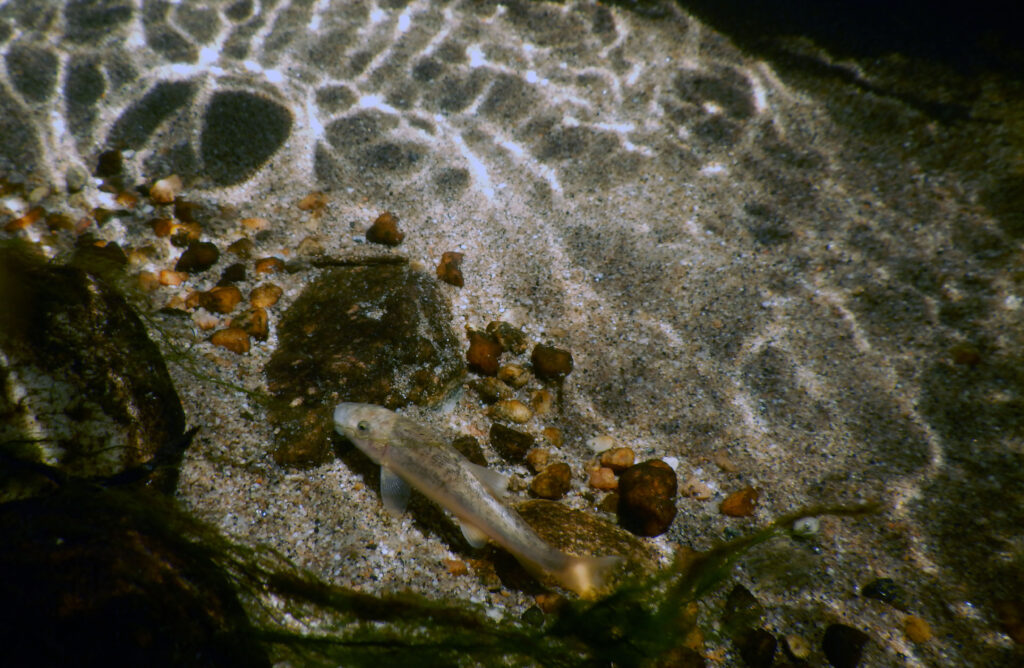Our Watershed
The Santa Ana River Watershed
The Santa Ana River Watershed is our major focus. This watershed covers more than 3,000 square miles of San Bernardino, Riverside and Orange Counties, and a small portion of Los Angeles County. It also encompasses the San Jacinto River Watershed. The Santa Ana River flows approximately 110 miles from the San Bernardino Mountains to Huntington Beach, where it empties into the Pacific Ocean.
History
Humans have inhabited this biologically rich watershed for the past 12,000 years, but it has changed most dramatically since the Spanish explorers arrived in 1769.
Modern development has transformed 3,900 miles of naturally meandering and flooding streams into straight and concrete-lined channels to control flooding and develop agricultural diversions.
Damming of the river and withdrawal of water for human consumption have reduced the flow of water and impeded sediment from flushing through the watershed to sustain plants and animals dependent on the river.
Wildlife
The Santa Ana River is home to at least 200 species of birds, 50 mammals, 13 reptiles, 7 amphibians and 15 types of fish. Many of these are threatened or endangered. Urban and industrial pollution as well as reduced space for habitat are constant threats to the river and the watershed as a whole. It is the goal of Inland Empire Waterkeeper to protect and preserve all of the waterways in the Santa Ana River Watershed, while maintaining a balance between human and environmental interests.

Santa Ana Sucker (Catostomus santaanae) in the Santa Ana River
Courtesy of U.S. Fish and Wildlife Service
Native Fish
Scientific Name: Catostomus santaanae
Status: Federally-Threatened according to the Endangered Species Act since 2000. There is no “Critical Habitat” designated for the sucker in the Santa Ana River and its floodplain because the US Fish and Wildlife Service determined the costs were greater than the benefits of designating Critical Habitat. The Western Riverside County Multi-Species Habitat Conservation Plan (MSHCP) addresses the Sucker with general goals of species and habitat protection.
Description: Omnivorous small fish (less than 6 inches)
Range: Found in the Santa Ana River from Rialto Channel (near Rialto wastewater treatment plant) to Imperial Highway, with most numbers recorded from Rialto Channel to Van Buren Boulevard bridge in Riverside.
Scientific Name: Rhinichthys osculus ssp.
Status: State-listed Species of Special Concern. Qualifies for listing as State-Endangered. It was attempted to have the dace listed as Federally-Endangered in 1996, but failed due to inadequate evidence that the Santa Ana speckled dace is a distinct sub-species.
Description: Member of the carp and minnow family. Can be more than 4 inches long, omnivorous.
Range: Simply described as the headwaters of the Santa Ana River (i.e., Mt. San Gorgonio), often in isolated stocks. Numbers severely reduced by mudflows in winter of 07/08 that were exacerbated by fires of October 2007.
Scientific Name: Gila orcuttii
Status: State Species of Special Concern. Qualifies for listing as State-threatened.
Description: In the same family as carps and minnows. No more than 5 inches in length; omnivorous
Range: Found in the Santa Ana River between Rialto Channel in Rialto and Mission Boulevard bridge in Riverside.
What does Federally-Threatened mean? Federally Threatened comprises species, subspecies or varieties likely to become endangered within the foreseeable future throughout all or a significant portion of their range. These are considered “Federally-listed” or “listed” because a final rule has been published in the Federal Register.
What Effect Does the Lack of Critical Habitat Have? Critical habitat would have required Federal agencies that are undertaking, permitting, or funding projects to consult with the Service, if the Federal agency determines a project may affect its designated critical habitat. The purpose of the consultation is to ensure activities will not adversely modify or destroy critical habitat. Non-Federal landowners are not required to consult with the Service unless a project requires Federal permits or funding. In such cases, the Federal agency responsible for issuing the permit or providing the funding will consult with the Service if it determines the project may affect the species or its critical habitat.
What Does California State Endangered Mean? Animals or plants are in serious danger of becoming extinct throughout all, or a significant portion, of their range due to one or more causes, including loss of habitat, over-exploitation, competition or disease.
What does California State Threatened Mean? Animals or plants, although not presently threatened with extinction, are likely to become endangered in the foreseeable future without special protection and management efforts.
What is a Species of Special Concern? A Species of Special Concern (SSC) is a species, subspecies, or distinct population of an animal native to California that currently satisfies one or more of the following (not necessarily mutually exclusive) criteria:
- Is extirpated from the State;
- Is listed as Federally-, but not State-, threatened or endangered;
meets the State definition of threatened or endangered but has not formally been listed; - Is experiencing, or formerly experienced, serious (noncyclical) population declines or range retractions (not reversed) that, if continued or resumed, could qualify it for State threatened or endangered status;
- Has naturally small populations exhibiting high susceptibility to risk from any factor(s), that if realized, could lead to declines that would qualify it for State threatened or endangered status.



